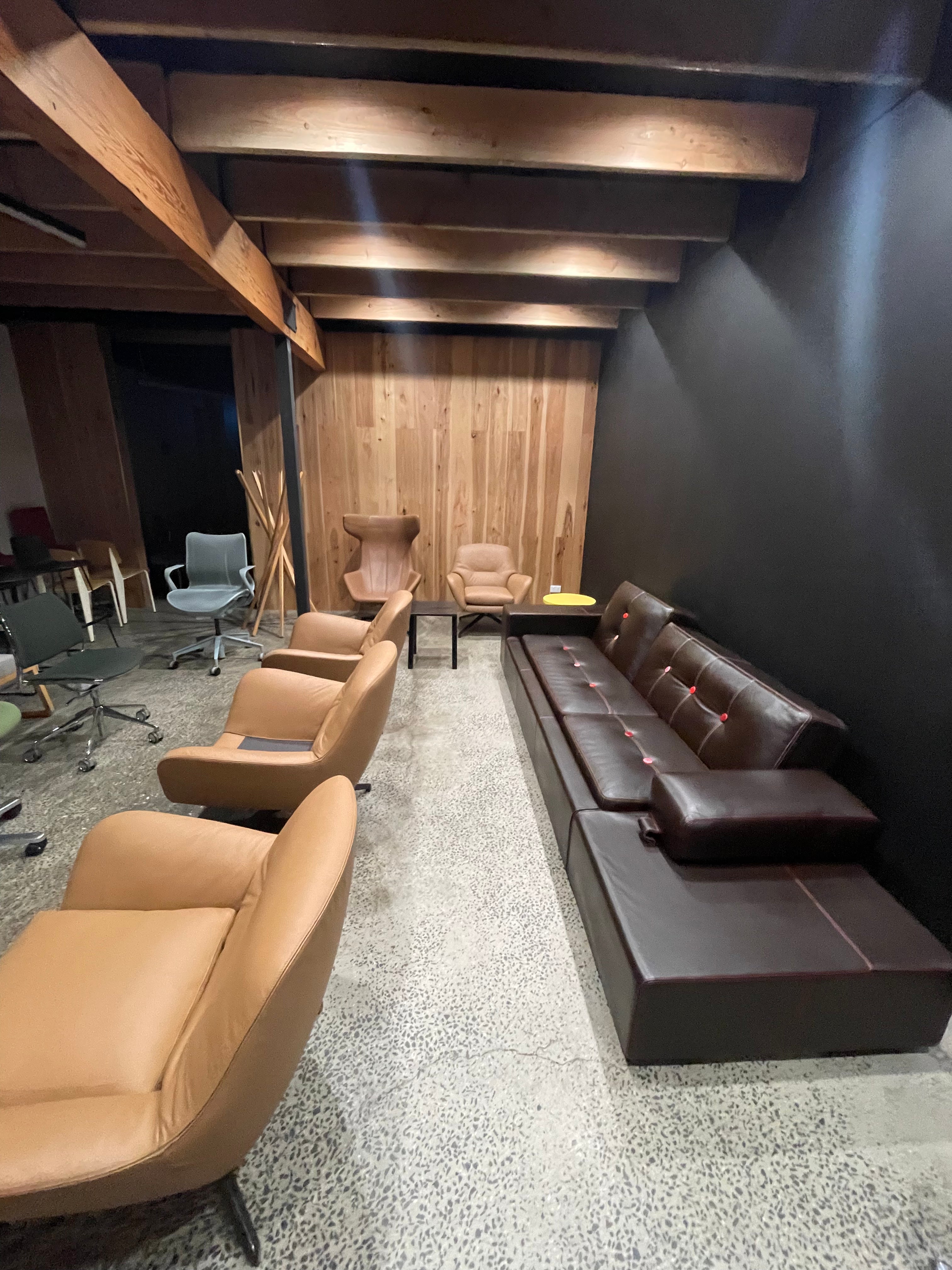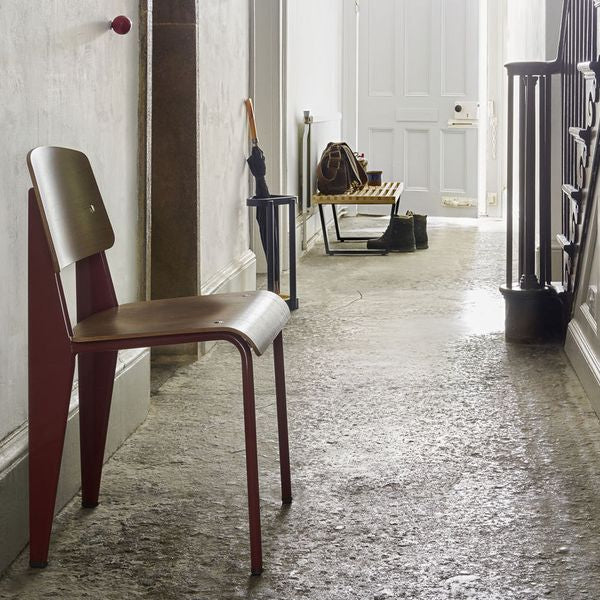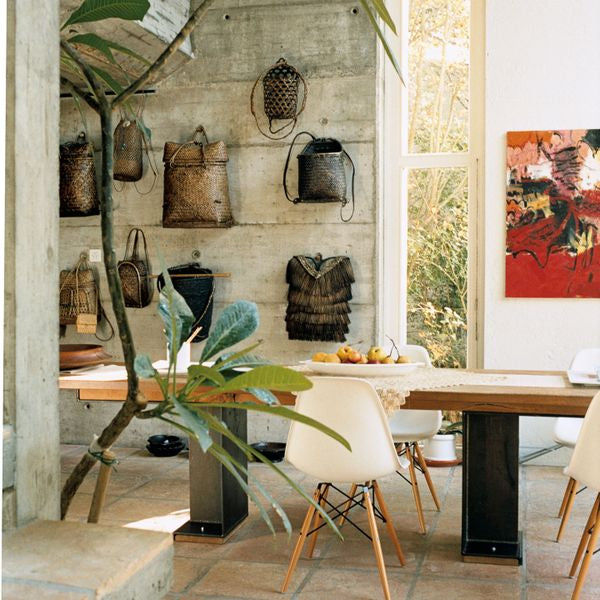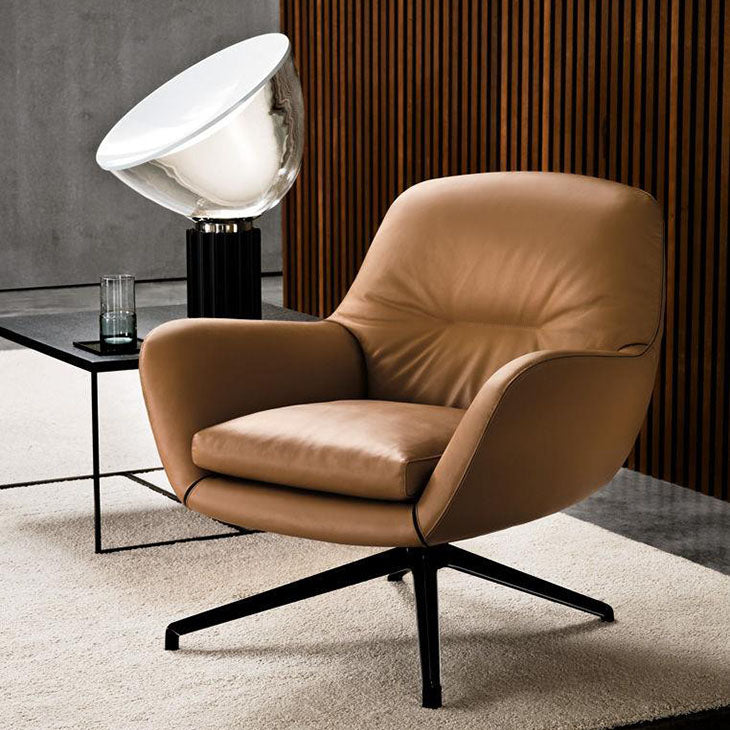Product information
MADE BY VITRA
Designer: Hella Jongerius
Condition : A Grade Excellent condition / Pre-owned with minimal use.
< Inspection available by appointment at Chairhub Melbourne. Freight is EXCLUDED and custom quote is required. >
Material description
- Structural frame: wooden frame.
- Seat cushions: polyurethane foam with interactive pocket spring core, chamber cushion structure (filled with foam cubes and lozenges) and polyester fleece.
- Back cushions: polyurethane foam with polyester fleece and chamber cushions (filled with foam cubes and lozenges).
- Armrest cushion: detached bolster, freely positionable, sand-weighted, polyurethane foam filling.
- Cover: Premium Leather, removable.
- Buttons: made of wood or horn, colour and grain subject to natural variations.
- Ottoman: wooden frame with polyurethane foam. The fabric and colour of the Ottoman matches that of the sofa. This unit is in luxurious premium leather of highest quality for best longevity and durability.
In the home country of Dutch designer Hella Jongerius, the word 'polder' refers to low-lying flatlands, typically subdivided into fields for agriculture, which have been reclaimed from the sea by means of dykes and drainage canals. Created with a flat surface and horizontal emphasis that evoke the characteristic features of this type of landscape, the Polder Sofa exhibits an unusual asymmetrical shape and carefully crafted combination of colours, materials and textures.
The cushions and body of the Polder Sofa are covered with different fabrics in carefully coordinated tones. The four palettes – The Sea Greens, The Pebble Greys, The Earth Reds and The Antarctic Blues – are muted, earthy shades. Thanks to these understated compositions, Polder is perfectly suited to any interior.
To accentuate these colour combinations, the eye-catching buttons – another special Polder feature – are made of natural materials with coloured pins. One light and one dark set of buttons each form a contrasting addition to the woven fabrics. Like all natural materials, the buttons made from horn or wood exhibit variations in shading, gradient, inclusions, grain, colour and texture, and no two are the same. Embracing such differences within a defined tolerance is an expression of Vitra's sustainable approach to environmental resources. Material that fails to meet our quality standards is of course rejected, but it is the differences that make each button unique.
The cushions and body of the Polder Sofa are covered with different fabrics in carefully coordinated tones. The four palettes – The Sea Greens, The Pebble Greys, The Earth Reds and The Antarctic Blues – are muted, earthy shades. Thanks to these understated compositions, Polder is perfectly suited to any interior.
To accentuate these colour combinations, the eye-catching buttons – another special Polder feature – are made of natural materials with coloured pins. One light and one dark set of buttons each form a contrasting addition to the woven fabrics. Like all natural materials, the buttons made from horn or wood exhibit variations in shading, gradient, inclusions, grain, colour and texture, and no two are the same. Embracing such differences within a defined tolerance is an expression of Vitra's sustainable approach to environmental resources. Material that fails to meet our quality standards is of course rejected, but it is the differences that make each button unique.




Recommended for You
- Choosing a selection results in a full page refresh.
!







